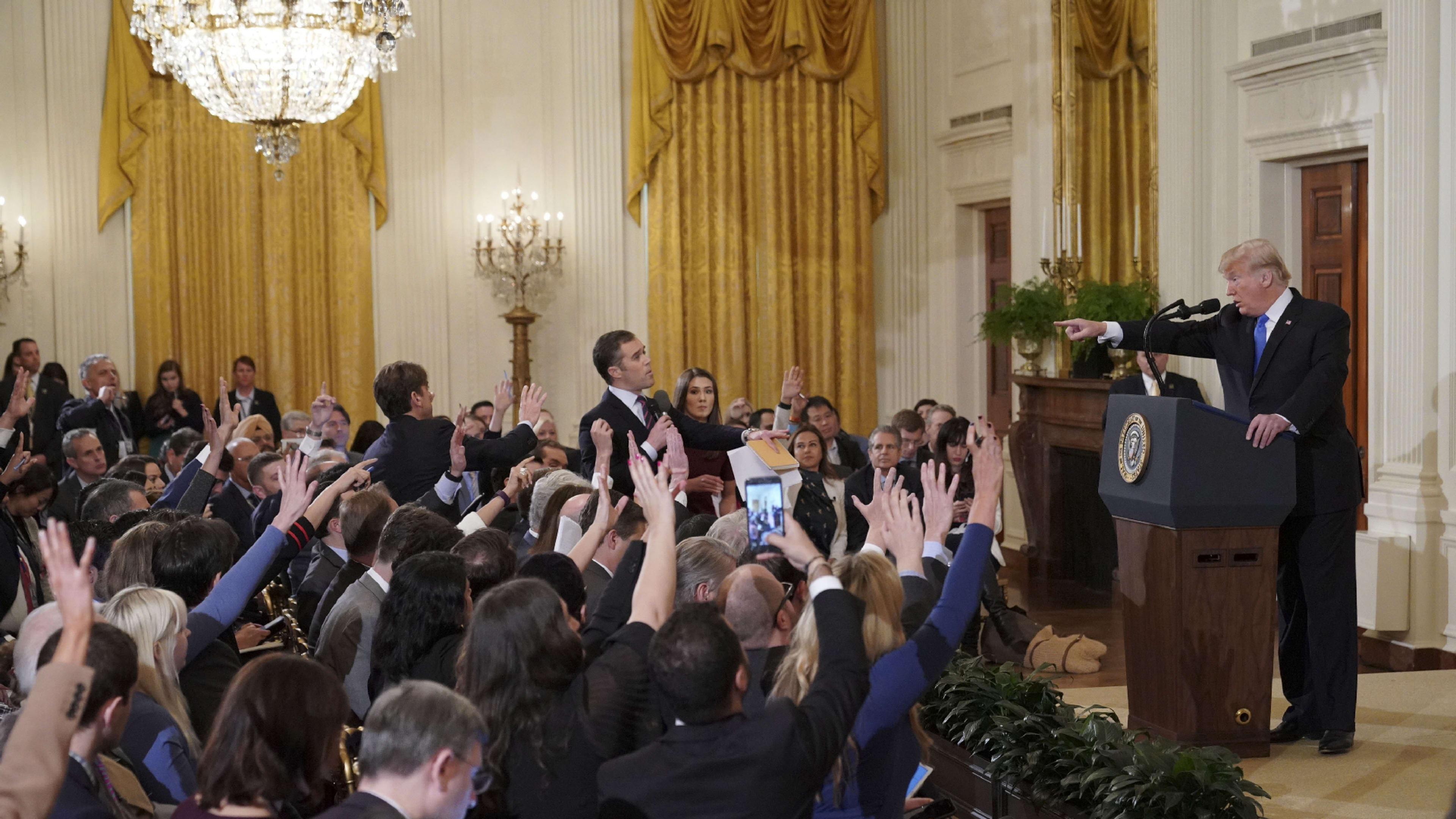It’s been the subject of a million tweets and become an obsession for online sleuths: What was done to alter the controversial video of CNN reporter Jim Acosta’s encounter with a White House intern shared by press secretary Sarah Sanders last night? During yesterday’s heated press conference, when Acosta angered President Trump by asking him a straightforward question about the migrant caravan, the president snapped and told him, “That’s enough!” A female White House intern jumped up to grab Acosta’s microphone away from him, but he held on to it and continued to question Trump.
Later in the day, the White House took away Acosta’s credentials, accusing the reporter of “placing his hands” on the intern, though it’s clear that’s not what happened. The video of the encounter went viral–with conspiracy theorists and Trump supporters spreading a version of the video that is at a different speed and at an angle to alter viewers’ impression of the incident in a way that supports the White House’s claim.
Here is the original C-SPAN video:
BREAKING: President Trump, CNN Correspondent Jim Acosta and @NBCNews Correspondent @PeterAlexander engage in tense exchanges in post-election news conference. pic.twitter.com/WUlXemGn7y
— NBC News (@NBCNews) November 7, 2018
And here is the altered version shared by Sanders:
We stand by our decision to revoke this individual’s hard pass. We will not tolerate the inappropriate behavior clearly documented in this video. pic.twitter.com/T8X1Ng912y
— Kayleigh McEnany 45 Archived (@PressSec45) November 8, 2018
We reached out to Hany Farid, a Dartmouth professor (and one of Fast Company‘s “Most Creative People” in 2018) who is working with the Pentagon’s Defense Advanced Research Projects Agency (DARPA) on software that can help detect “deep fakes,” videos and images that have been altered and manipulated. He says that he doesn’t see evidence that the video was doctored, adding that it’s more likely the video was “transcoded,” reducing its overall quality and clarity to make the interaction seem “less clear and open to interpretation.” Farid emphasized that it’s clear that Acosta “did not strike her as his hand comes down.”
Farid notes that the fierce debate over the video is in some ways more dangerous than the actual altered video, since it makes the public skeptical of even authentic unaltered footage.
Here is Farid’s analysis:
From my review of the various videos of the press conference, I believe that the video tweeted by the Press Secretary is misleading but I don’t see unambiguous evidence that it has been doctored. A combination of a reduction in the quality of the video, a slowing-down of the video, and the particular vantage point of the CSPAN video gives the appearance that there was more contact between the reporter and the intern than there probably was. In particular, if you look at original, higher-quality videos from other vantage points, you can more clearly see that while there was some contact between the reporter and intern, he did not strike her as his hand comes down.
While it is possible that the video was intentionally doctored, the simpler explanation is that the video was transcoded, reducing the overall quality and clarity of the video, which in turn made the interaction between the reporter and intern less clear and open to interpretation.
This is a good example of precisely the problem that emerges when video can be easily manipulated — anyone can claim that a video is fake and that claim is credible. In many ways, this may be the larger threat than the actual fake footage.
Recognize your brand’s excellence by applying to this year’s Brands That Matter Awards before the early-rate deadline, May 3.
